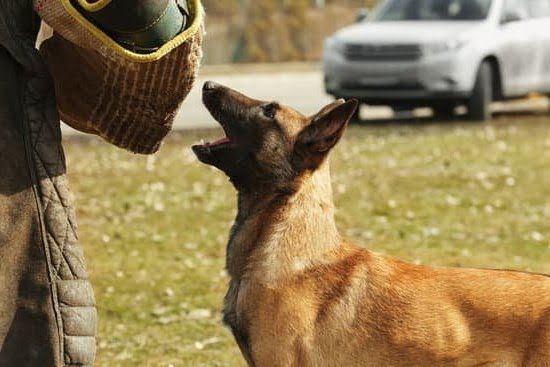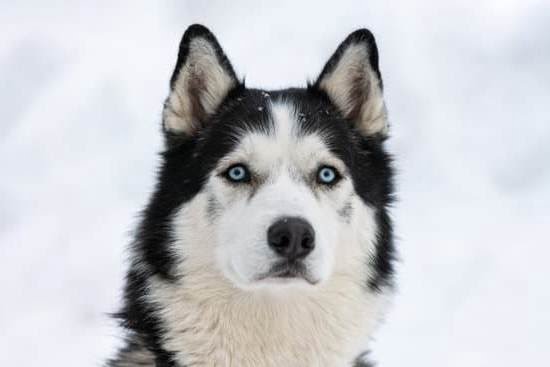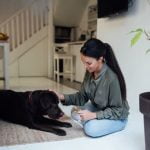Introduction
Training a puppy to leave an older dog alone is essential in keeping both animals safe and happy. There are several benefits to teaching a pup to respect the elderly dog’s space and boundaries. A puppy may wish to play and be playful, but arguments between the two can quickly arise, leading to conflict. Having rules in place from the start set expectations for how the two should interact. Introducing a puppy into an existing household with an adult dog can be tricky, but with proper training, both animals can learn to safely coexist.
Benefits of teaching a puppy to respect their older canine companion include reducing stress for both dogs and avoiding negative behavior such as hyperactivity, dominant aggression and fearfulness from either pet. Establishing clear boundaries reinforces the hierarchy of the home and prevents fights from developing later on. It also enhances self-confidence in the elder pooch while teaching the pup manners. Finally, teaching a puppy to leave an older dog alone helps create mutual understanding so that they develop lasting companionship based on trust and respect rather than rivalry or domination.
Establishing Boundaries
When you first bring a puppy into the home, it is important to establish boundaries between him and the older dog. Ideally, the puppy should have his own space in your house – a safe spot that is away from the older pet. This can be a just small area with a bed or crate, where the puppy can retreat when he needs to escape being harassed by the elder canine. Have all of the puppy’s belongings – like food dishes, toys, and treats – in this area. Make sure the puppy is taught not to enter the territory of your older dog unless given permission. Use verbal commands, like “No” and “Stay Back” to enforce these boundaries. Additionally, keeping both dogs on leashes when out walking can help ensure that every dog understands their place in your pack structure. It’s also important for each pup to get his own individual one-on-one time with you – if one feels like they’re not receiving enough attention from you, it can cause them to resource guard objects or even people from each other. Keep straightening these boundaries of behavior until it’s second nature for both pets to follow them!
Teaching Puppy Not to Pester Older Dog
When introducing a puppy to an older dog, it’s important for the puppy to learn to leave their furry companion alone. This can be easily accomplished by doing the following:
First, start by teaching the puppy basic commands such as “sit”, “stay” and “come”. By instilling these commands early on, you will be able to set limits with the puppy in regards to behavior. Letting the older pup know when they need to respect boundaries with their new family member is key for peace in your home.
Second, create plenty of distractions for the puppy so that she does not become too eager and boisterous around the elder pup. Playing interactive games with her such as fetch or hide and seek can help keep her occupied. This will give her something else to focus on besides annoying her older pal. Additionally, providing chewable toys which she can occupy herself with whenever boredom arises might prove beneficial as well.
Fourthly, have patience! Some puppies take longer than others when it comes to accepting boundaries; it’s important not to get frustrated with either pup if progress is slow at first. Reward them both whenever they show positive behavior towards one another; rewarding reinforces positive behaviors in dogs and can motivate them further down the road of accepted conduct between one another.
By Exercise creating calm environments through use of distraction techniques, basic obedience training and behavior rewards, eventually you will be able find a sense of harmony between your two canine companions.
Positive Reinforcement
When it comes to training a puppy to leave an older dog alone, positive reinforcement is essential. Reward good behavior by praising and reinforcing the action after your puppy avoids the older dog. Enlist the help of friends or family to reinforce this behavior. If you don’t acknowledge the desired behavior, it won’t become habit. Praise could be in the form of verbal praise, but you can also use treats as a reward for desired behavior. Be sure not to punish your pup harshly instead of rewarding them when they display proper behavior around your older pet – punishing only teaches fear and forces avoidance behaviors, which works against our goal here. Try to stay consistent in training sessions; make sure everyone involved understand the same rules and expectations so that there are no mixed messages being sent to your pup. Remember that puppies can only understand so much information at once; keep training simple and break down complex tasks into smaller components with clear instructions and expectations that they can more easily comprehend. Allow plenty of time when working on challenging behaviors as habits take time to cultivate and master.
Attention as a Reward
One of the best ways to train a puppy to leave an older dog alone is to reward positive behaviour. Puppies are very responsive to rewards, and providing focused attention can be a powerful motivator for them. Every time your puppy leaves your older dog alone or claws less aggressively at him, take the time to lavish some attention on them in the form of petting, vocal praise, or treats. This will help reinforce the good behaviour and encourage it in the future. It is important that the older dog does not get any extra attention during this process, as it might be interpreted as favouritism from your pup. Make sure to give plenty of treats and attention solely when your puppy leaves the older dog alone. Additionally, make sure you monitor their interactions closely until your puppy fully understands what behaviours make you happy!
Disciplining When Necessary
Training puppies to give an older dog a wide berth is key to avoiding stressful, unwanted encounters. If the puppy displays overly aggressive or pushy behavior, it is important to intervene right away and take swift action, setting a firm boundary in place. You’ll want to be consistent and repeat this process each time the puppy breaks the rule. One useful way to do this could be to interject with a verbal command like “no” when they show too much interest in their elder canine companion. If the puppy ignores your commands they need to learn that there are consequences for not following orders – such as verbal reprimands, timeouts or other kinds of removal from activities or areas of your home (even if it’s just for a few minutes). Doing this can dramatically improve the situation over time and should help your pup learn that certain behavior isn’t acceptable and will not be tolerated.
Encouraging Positive Interactions Between Pets
When introducing a puppy to an older dog, it is important to ensure that positive interactions occur between them. This will help create a strong bond and ensure the puppy behaves properly in the presence of the older pet. One way to facilitate positive interactions is by playing together. It is essential to select games and toys that appeal to both animals, such as tug of war or fetch. This gives the older dog an opportunity to be assertive while also giving the puppy a moment of acceptance and ownership as they play together. Additionally, it will provide an enjoyable experience for both dogs in which they can safely explore their relationship.
Another option for establishing a positive bond between pets is outfitting them with matching accessories like collars or leashes. Having similar elements when taking walks or engaging in physical activities outside can make the experience more enjoyable for both animals due to the consistency it provides them with each other’s movements and behaviours. Finally, providing separate spaces for each pet can help reduce feelings of jealousy towards one another and maintain peaceful relations between them. For example, having designated ‘safe-spaces’ within their shared living area allows each animal to have a secure spot at which they can relax without competition from other members of the family.
Consistency Is Key
Training your puppy to leave your older dog alone is essential for the health, happiness and safety of both dogs. To do this successfully and consistently, it’s important to know how to properly reward and reinforce behaviours in order to achieve the desired results.
When you see the puppy behaving well (e.g. not jumping up with excitement, being calm around your older dog), reward this behaviour right away with a treat or verbal praise. This will show your pup that leaving the older dog alone is something positive and enjoyable. If, however, you allow any sort of exuberant behaviour (such as barking or jumping) around the older dog, be sure to correct it immediately – whether that means giving a stern “No” or leading the pup away from your elder one.
Keeping things consistent is key! If you need help setting up an effective training program for your pup, consider working with a certified canine behaviourist who can help generate customized strategies tailored specifically for your furry family members. With consistency and dedication on your part, you can easily have both dogs living harmoniously under one roof in no time!
Preventative Measures to Take
Before introducing your puppy to your older dog, it is important for you to establish a few ground rules which should be followed when the two of them interact. For example, no rough play should be allowed and you should make sure that the puppy does not excessively harass or try to play with the older dog. If any of these rules are broken, you should immediately intervene and redirect your puppy’s attention to a more suitable activity. Additionally, it is important that you remain consistent in enforcing these rules with both of your pets whenever they interact. This will help ensure that each pet respects each other’s boundaries and that no harm is done by either animal.
Conclusion
Once your dog is used to staying away from the older one, you need to create a routine that will last and that can be expected. Incorporate positive reinforcement by providing rewards like treats or a toy when they obey the command to stay apart. Eventually, they’ll make it a habit even when there are no rewards involved. Spend time with each dog separately so that they have their own attention and share in activities that both of them enjoy.
You may also want to consider some commands to help keep them separate as well as objects that may act as physical barriers when needed. Redirecting their attention with new toys or activities whenever they get too close is another way to keep them from becoming over-excited near each other too quickly. As long as you continue training in a positive and consistent manner, your puppy should eventually learn how to be politely distant from the older dog on their own.

Welcome to the blog! I am a professional dog trainer and have been working with dogs for many years. In this blog, I will be discussing various topics related to dog training, including tips, tricks, and advice. I hope you find this information helpful and informative. Thanks for reading!





